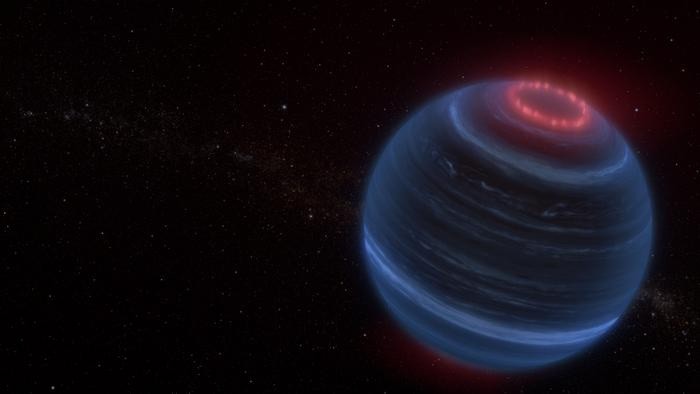Astronomers utilizing the James Webb Space Telescope (JWST) have stumbled upon a shocking discovery concerning a cold brown dwarf.
The telescope's latest observations have revealed methane emission on this celestial body, a surprising revelation given its frigid and secluded nature.
This discovery suggests that the brown dwarf in question may be capable of generating aurorae akin to those observed on Earth, Jupiter, and Saturn.

Aurorae on a Brown Dwarf
Brown dwarfs, characterized by their intermediate mass between planets and stars, are prevalent within our solar vicinity, with thousands having been identified.
Last year, a team led by Jackie Faherty, a senior research scientist and senior education manager at the American Museum of Natural History, was granted JWST observation time to scrutinize a dozen such brown dwarfs.
Among these targets was CWISEP J193518.59-154620.3, more succinctly known as W1935-a cold brown dwarf situated 47 light years away.
This particular celestial object, co-discovered by citizen science volunteer Dan Caselden and the NASA CatWISE team through the Backyard Worlds: Planet 9 project, boasts a surface temperature of approximately 400° Fahrenheit. While its mass remains somewhat uncertain, estimates suggest it ranges from six to 35 times the mass of Jupiter.
During their examination of various brown dwarfs via JWST, Faherty's team encountered an intriguing anomaly with W1935: the presence of methane emissions, a phenomenon previously unobserved on such celestial bodies.
"Methane gas is expected in giant planets and brown dwarfs but we usually see it absorbing light, not glowing," Faherty said in a press release statement. "We were confused about what we were seeing at first but ultimately that transformed into pure excitement at the discovery."
Subsequent computer modeling unveiled yet another revelation: W1935 likely exhibits a temperature inversion, wherein the atmosphere grows warmer with altitude.
However, unlike these planets, W1935 exists in isolation, devoid of any discernible external heat source, according to the research team. This led the researchers to hypothesize about potential explanations for this atmospheric anomaly.
The researchers posited that W1935 might harbor aurorae based on drawing upon studies of Jupiter and Saturn, planets known to display methane emissions and temperature inversions.
Is there a Moon on W1935?
Aurorae are often fueled by interactions between high-energy particles from the sun and a planet's magnetic field and are responsible for the dazzling light displays seen near Earth's polar regions.
However, the researchers say the absence of a host star for W1935 complicates this explanation, as the solar wind cannot contribute to the process.
Nevertheless, another tantalizing possibility exists: the presence of an active, yet-to-be-discovered moon orbiting W1935.
"Every time an astronomer points JWST at an object, there's a chance of a new mind-blowing discovery," said Faherty.
"Methane emission was not on my radar when we started this project but now that we know it can be there and the explanation for it so enticing I am constantly on the look-out for it. That's part of how science moves forward."
The findings of the research team were published in the journal Nature.

![Apple Watch Series 10 [GPS 42mm]](https://d.techtimes.com/en/full/453899/apple-watch-series-10-gps-42mm.jpg?w=184&h=103&f=9fb3c2ea2db928c663d1d2eadbcb3e52)



